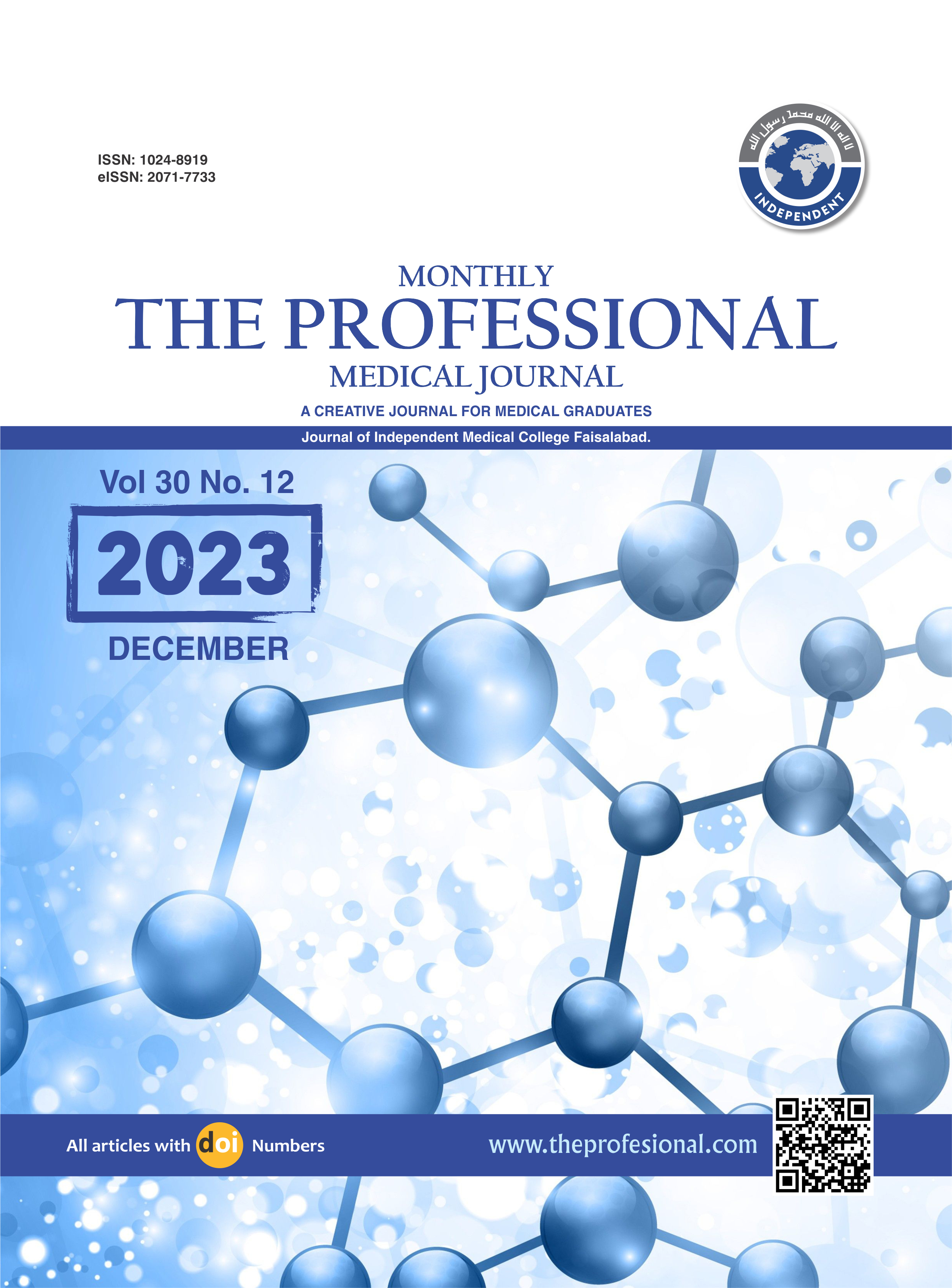Frequency of acute kidney injury in birth asphyxia at a Tertiary Care Hospital, Karachi.
DOI:
https://doi.org/10.29309/TPMJ/2023.30.12.7767Keywords:
Acute Kidney Injury, Birth Asphyxia, Creatinine, Urea, Urine OutputAbstract
ABSTRACT… Objective: To determine the frequency of acute kidney injury (AKI) in neonates presenting with birth asphyxia. Study Design: Cross-sectional study. Setting: Department of Pediatrics, National Institute of Child Health, Karachi. Period: December 2022 to May 2023. Material & Methods: A total of 159 neonates of both gender, aged between 7-28 days and having birth asphyxia were analyzed. Demographic features were recorded. The blood sample was collected in a sterile manner using 5 ml syringe and sent to the institutional laboratory for serum creatinine and electrolyte analysis. The frequency of AKI was noted. Results: In a total of 159 neonates, 95 (59.1%) were boys, The mean baseline serum urea and creatinine were 33.5±32.1 and 0.83±0.62 mg/dl respectively. AKI was noted in 65 (40.9%) neonates. Girls (p=0.035), relatively lower occipital frontal circumference (p=0.004), normal vaginal delivery (p<0.001), history of seizures (p<0.001), abnormal USG KUB (p<0.001), poor conscious level (p<0.001), higher birth asphyxia grading (p<0.001) and poor urine output (p<0.001) were linked with AKI. Mean baseline serum urea levels and serum creatinine levels were significantly raised among neonates who had AKI. Conclusion: The frequency of acute kidney injury among neonates having perinatal asphyxia was high. AKI was noted to have significant association with female gender, relatively lower occipital frontal circumference, normal vaginal delivery, history of seizures, abnormal ultrasonography findings, poor conscious level, higher birth asphyxia grading, and poor urine output at the time of admission.
Downloads
Published
Issue
Section
License
Copyright (c) 2023 The Professional Medical Journal

This work is licensed under a Creative Commons Attribution-NonCommercial 4.0 International License.


